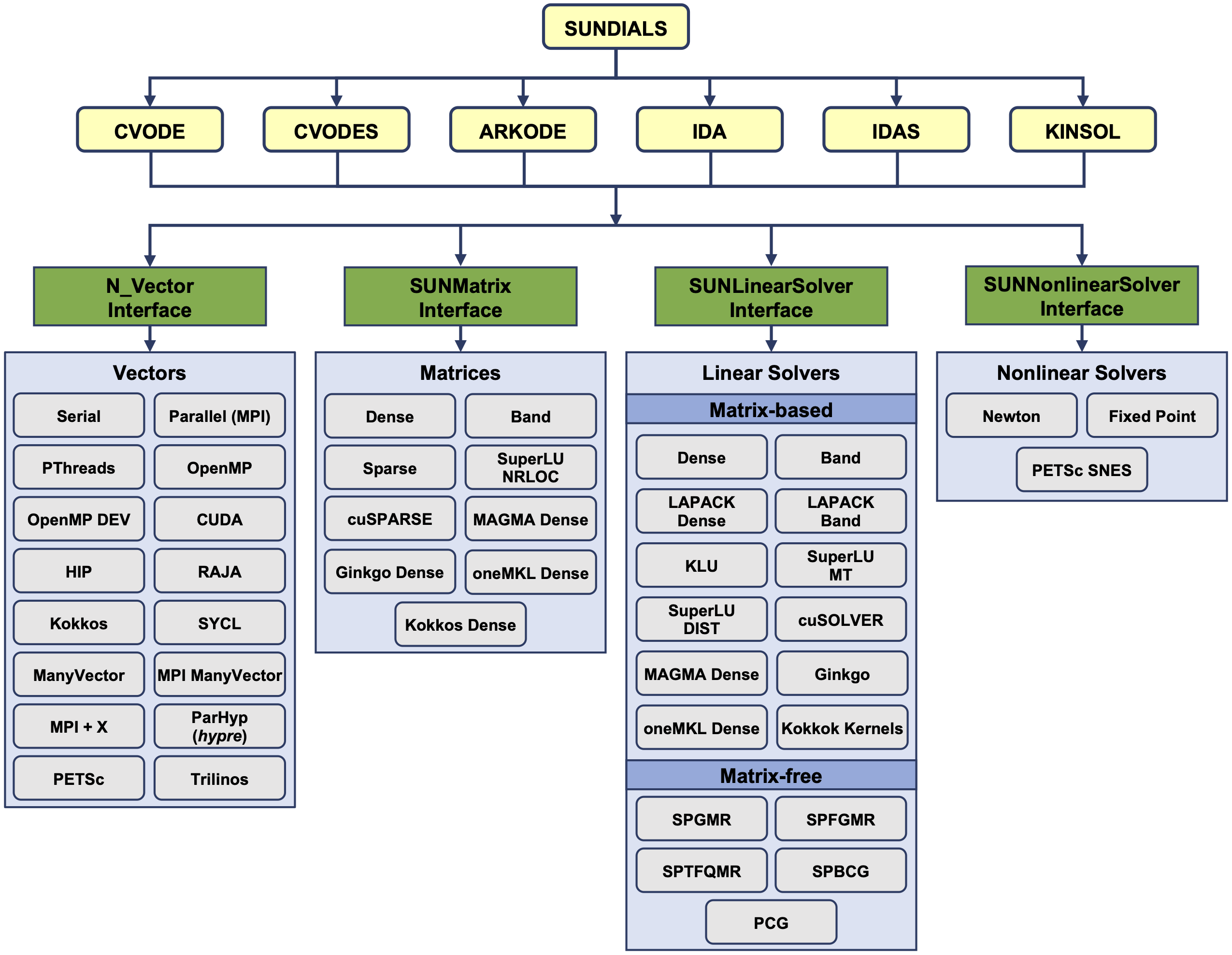1. Getting Started
The packages that make up SUNDIALS are built upon shared classes for vectors, matrices, and algebraic solvers. In addition, the packages all leverage some other common infrastructure, which we discuss in this section.

Fig. 1.1 High-level diagram of the SUNDIALS suite.
Table of Contents: